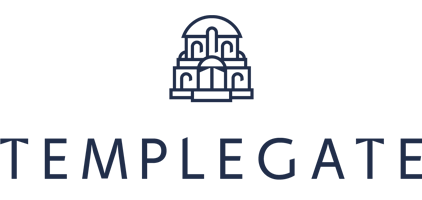According to Statista, in 2020 there were approximately six million private businesses operating in Britain, an increase of 300,000 on the previous year.
There are several reasons people start their own business, including improved work-life balance, flexibility and earning potential. But one benefit many business owners may not realise exists is that running a company could provide a valuable shield against Inheritance Tax (IHT) on their death due to Business Relief (BR).
When you consider IHT is charged at 40% on any amount that exceeds your client’s nil-rate band (NRB), the savings made using BR could be substantial, meaning they can pass on much more of their estates to loved ones.
But what happens if your client sells their business? In reality, BR could be lost, meaning the proceeds from the sale may fall into the estate and be liable to IHT.
Yet, with the help of a financial planner your clients might be able to keep hold of BR, and the IHT benefits that go with it. More than that, in some situations BR can be used by anyone facing an IHT liability, regardless of whether they are – or were – a business owner.
Read on to discover how.
1. BR was introduced to allow businesses to be passed to family IHT free
Inheritance Tax (IHT) is charged at 40% when a person’s taxable estate exceeds their nil-rate band (NRB). The NRB is the amount you are allowed to have in your estate before IHT is due. Depending on your client’s situation, their NRB will be between £325,000 and £1 million.
Yet BR – formerly known as “Business Property Relief” (BPR) – was introduced in 1976 to ensure that if an owner of a company died, it could be passed on to their family without having to be sold or broken up to pay IHT.
This means that if your client dies while they have an ongoing business, or an ongoing interest in a business, their family could claim 100% IHT relief, regardless of whether your client runs the company as a sole trader, partnership, or limited company.
2. Under BR rules your client could get 50% or 100% relief on IHT
If an asset qualifies for BR it is known as a “relevant business property” and its value is reduced by 50% or 100% when calculating IHT.
This means that your client’s family could receive full IHT relief on a business, interest in a business or shares in an unquoted company, such as a company listed on the Alternative Investment Market (AIM).
If full relief is not available, your client’s family may still receive 50% relief on the following:
- Land, buildings, plant, or equipment that the business owns, as long as it is wholly or mainly used by the business
- Shares controlling more than 50% of the voting rights in a listed company
- Land, buildings, plant, or equipment used in the business and held in a trust.
It is important to remember that your client must have owned the business or asset for at least two years to claim BR relief.
3. Not all businesses can benefit from BR
There are also circumstances when BR may not be available to your clients, such as when more than half of the business involves:
- Dealing in stocks and shares
- Dealing in land or buildings
- Making and holding investments.
4. It’s not only business owners who can benefit from BR relief
Since its introduction, successive governments have used BR to encourage people to invest in trading businesses, regardless of whether that involves running the business or not.
Because of this, BR can be used to help those who don’t have a business but do have an IHT liability. This can be done by investing through the Enterprise Investment Scheme (EIS), for example, which helps fund small companies, some of which may be listed on the Alternative Investment Market (AIM).
5. BR can help those with more complicated or time-sensitive IHT needs
A major advantage of BR is the reduced time before the amount invested falls outside of your client’s estate.
Normally, gifts made by your client are seen as a Potentially Exempt Transfer (PET), which means your client must live for seven years before it falls outside their estate.
But with BR, the investment typically falls outside an estate after just two years, something that could be particularly attractive for many of your clients.
Other situations where BR could work particularly well for your clients is when they:
- Don’t want to gift large sums of money or want to retain access to it
- See trusts as too expensive and/or complicated
- Want to retain their wealth to cover the cost of later-life care
- Your client feels their beneficiaries are too young to inherit the wealth.
Speaking with a financial planner ensures your clients use BR correctly
Using BR, we can potentially help your clients reduce their exposure to IHT, while at the same time meeting one or more of the above objectives.
Templegate can work with you whenever a business owner or someone with an IHT liability wants to make a will, ensuring their IHT mitigation strategy – whether it includes BR or not – is right for them.
Doing this provides peace of mind for your client and helps provide a higher level of service to your clients.
If you would like to discuss working with us to help your clients plan their inter-generational gifting, please contact us on 01264 300 125.
Please note
This article is for information only. Please do not act based on anything you might read in this article.
All contents are based on our understanding of HMRC legislation which is subject to change.
The Financial Conduct Authority does not regulate estate planning, tax planning or will writing.







